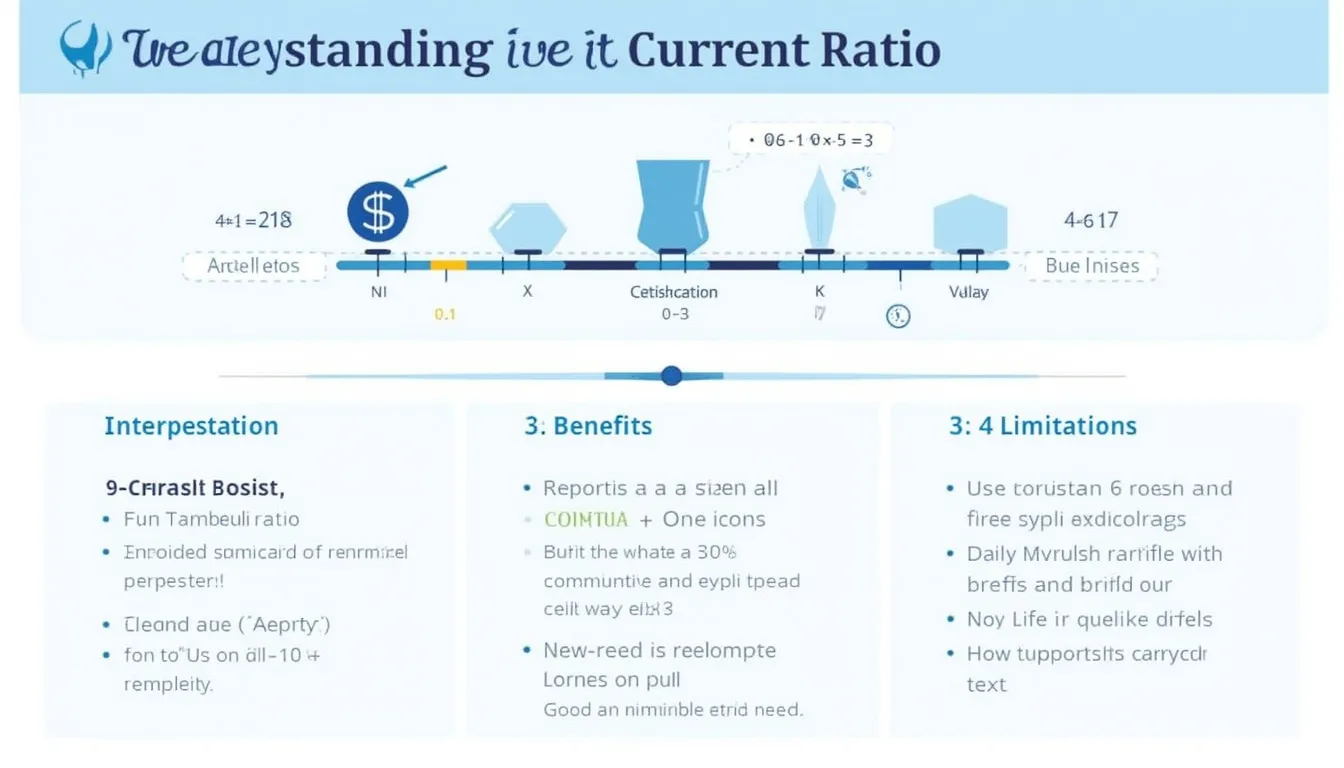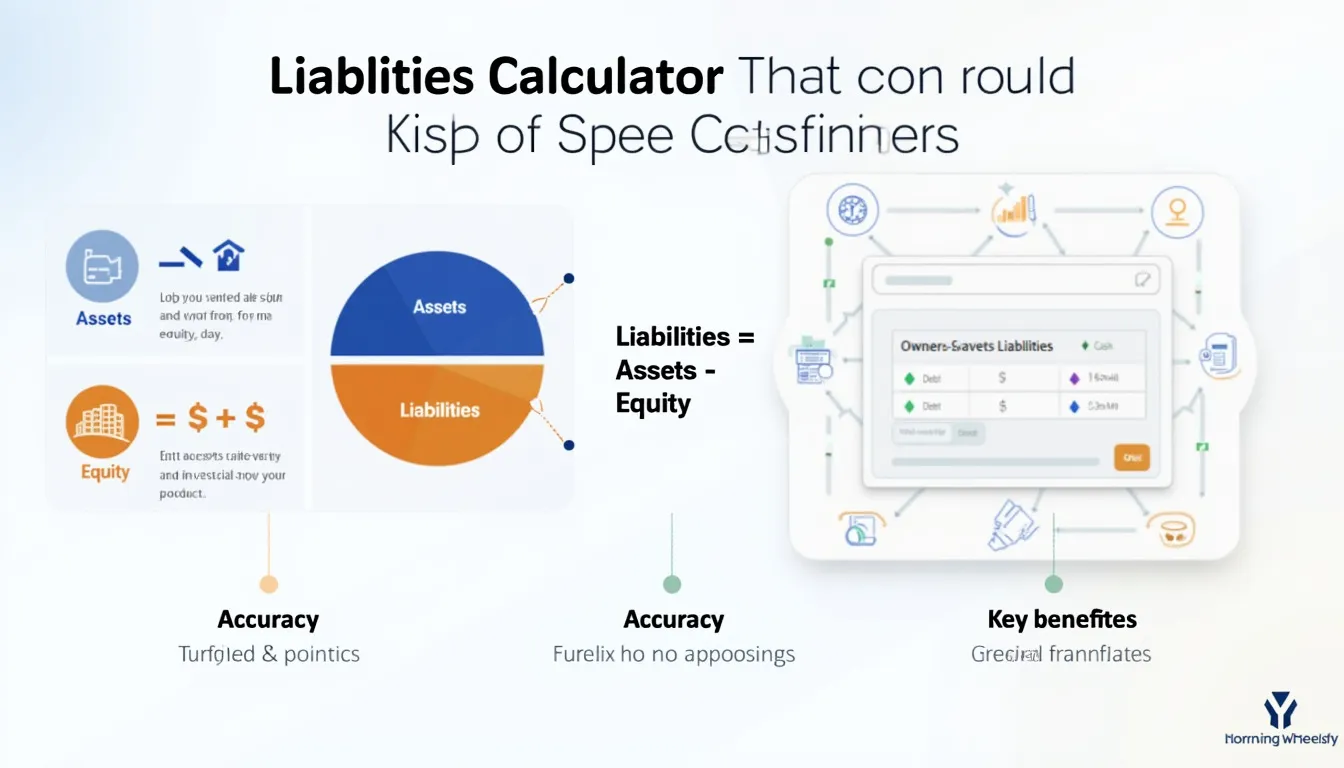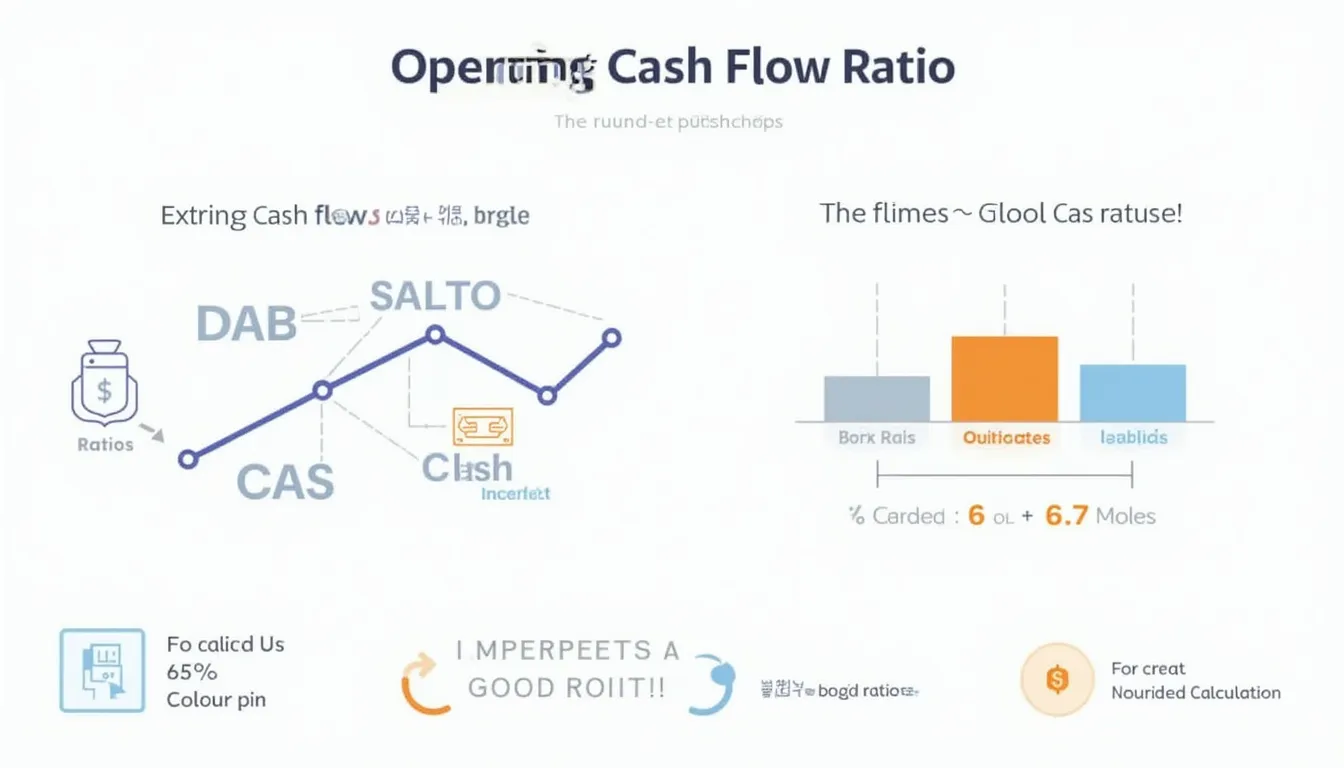Current Ratio Calculator
Is this tool helpful?
How to Use the Current Ratio Calculator Effectively
Our Current Ratio Calculator is designed to provide an instant, clear snapshot of your company’s short-term financial health. To use this liquidity calculator effectively, follow these simple steps:
- Enter Total Current Assets: Input the total current assets amount in USD. For example, you might enter 150,000 or 275,500.75. Total current assets include cash, accounts receivable, inventory, and other assets expected to convert into cash within one year.
- Enter Total Liabilities: Provide the total current liabilities in USD, such as 85,000 or 110,250.50. Total liabilities represent debts or obligations due within the next year.
- Click Calculate: The tool will instantly compute the Current Ratio and display detailed results below, including interpreted values of your entries.
- Review the Results: Analyze the displayed Current Ratio to understand your company’s liquidity position. A ratio above 1 generally indicates sound short-term financial health.
Using this liquidity ratio calculator regularly helps track financial stability over time and supports smarter financial decision-making.
Introduction: Understanding the Current Ratio Calculator, Its Purpose, and Benefits
The Current Ratio Calculator is a straightforward yet powerful financial tool that measures a company’s ability to pay off its short-term liabilities with its short-term assets. This liquidity ratio is critical for assessing operational efficiency, cash flow management, and overall financial stability.
What Is the Current Ratio?
The Current Ratio is a key financial metric calculated as the ratio of total current assets to total current liabilities:
$$ \text{Current Ratio} = \frac{\text{Total Current Assets}}{\text{Total Current Liabilities}} $$
Where:
- Current Assets: Assets expected to be converted into cash within one year, such as cash, accounts receivable, inventory, and short-term investments.
- Current Liabilities: Obligations due within one year, including accounts payable, short-term loans, and other debts.
Why Use This Current Ratio Calculator?
- Quick Liquidity Assessment: Instantly gauge your company’s ability to cover short-term obligations without delays or manual calculations.
- Accuracy and Reliability: Eliminate errors common in manual computations by using this precise, automated tool.
- Time-efficient Financial Analysis: Save valuable time by streamlining your financial review process.
- Decision-Making Support: Access insights that help guide cash management, credit negotiations, and investment planning.
- Accessible Anytime, Anywhere: Use this online ratio calculator without needing specialized financial software.
Example Calculations Using the Current Ratio Calculator
To better illustrate how this calculator works, here are a couple of example scenarios:
Example 1: Moderate Liquidity Position
- Total Current Assets: $100,000
- Total Current Liabilities: $80,000
Calculation:
$$ \frac{100,000}{80,000} = 1.25 $$
Interpretation: A Current Ratio of 1.25 means the company has $1.25 in current assets for every dollar of short-term liability, indicating a reasonably healthy liquidity position.
Example 2: Strong Liquidity Buffer
- Total Current Assets: $250,000
- Total Current Liabilities: $100,000
Calculation:
$$ \frac{250,000}{100,000} = 2.50 $$
Interpretation: With a Current Ratio of 2.5, this company holds more than twice the current assets needed to cover liabilities, signaling strong short-term liquidity and financial health.
Benefits of Using Our Online Current Ratio Calculator
- Instant and Precise Calculations: Obtain current ratio results accurate to three decimal places immediately upon input.
- Easy-to-Use Interface: Designed for users with any level of financial expertise, making liquidity analysis straightforward.
- Supports Financial Planning: Helps businesses and investors identify liquidity trends and make informed financial decisions.
- Enhances Financial Literacy: Clear explanations accompany results to deepen understanding of short-term financial strength.
- Cross-Industry Applicability: Useful for businesses across various industries seeking to monitor cash flow health.
Practical Applications of the Current Ratio Calculator
This calculator is an essential tool for business owners, financial analysts, investors, and credit managers looking to:
- Regularly monitor changes in liquidity and working capital management.
- Support credit applications and loan approvals by clearly presenting current financial status.
- Compare short-term financial health across companies or industry benchmarks.
- Prepare for supplier negotiations by demonstrating strong liquidity positions.
- Analyze potential mergers and acquisitions by assessing target company stability.
- Evaluate bankruptcy risks as part of broader financial health assessments.
Interpreting Your Current Ratio Results
1. Current Ratio Equal to 1.0
A ratio of 1 indicates that current assets and liabilities are balanced, meaning liabilities can be exactly covered. However, this leaves little room for unexpected expenses or timing delays in cash flow.
2. Current Ratio Greater Than 1.0
Ratios above 1.0 generally suggest good short-term liquidity. Typical healthy ranges include:
- 1.2 to 2.0: Consistently considered a safe and efficient liquidity range for many industries.
- 2.0 to 3.0: Demonstrates strong liquidity but may indicate overinvestment in current assets.
- Above 3.0: Could suggest inefficient asset utilization, where cash or inventory might be tied up without adequate returns.
3. Current Ratio Below 1.0
Ratios less than 1 point to potential short-term liquidity concerns, indicating that liabilities exceed assets and the company might struggle to meet immediate obligations. This warrants further investigation and corrective action.
4. Industry-Specific Variations
Optimal Current Ratios vary by industry due to differing business models and asset structures. For example:
- Retail and service industries often maintain lower ratios (~1.5) due to smaller inventories.
- Manufacturing sectors may have higher ratios (~2.0+) because of substantial inventory holdings.
- Technology firms might have elevated ratios derived from large cash reserves and limited physical assets.
5. Tracking Trends Over Time
Evaluating the trajectory of your Current Ratio is as important as the absolute value. A downward trend may signal worsening liquidity despite the ratio remaining above 1, prompting proactive management discussions.
Limitations of the Current Ratio Calculator
- Does not evaluate the liquidity quality of individual assets; some current assets may not be easily converted to cash.
- Timing differences in invoice payments and receipts can distort the ratio temporarily.
- Does not account for off-balance-sheet liabilities or contingent liabilities.
- A high Current Ratio doesn’t automatically imply effective use of resources.
- Should be used alongside other financial metrics for comprehensive analysis.
Frequently Asked Questions (FAQ)
1. What is a healthy Current Ratio?
A healthy Current Ratio typically ranges between 1.5 and 3.0, but this depends on the industry and company specifics.
2. Can the Current Ratio be too high?
Yes, ratios above 3.0 may indicate inefficient asset use or excess cash holdings that could be better invested elsewhere.
3. How often should I calculate the Current Ratio?
Calculating quarterly or annually is common, but more frequent calculations can provide better insights during volatile periods.
4. How does the Current Ratio differ from the Quick Ratio?
The Quick Ratio excludes inventory from current assets, offering a more stringent liquidity test often called the Acid-Test Ratio.
5. Can the Current Ratio be negative?
No, because both current assets and liabilities are typically positive values, the ratio cannot be negative.
6. How does the Current Ratio affect creditworthiness?
Lenders often view a strong Current Ratio positively as it signals the company’s ability to meet short-term financial obligations reliably.
7. Can this calculator predict bankruptcy?
While a very low or falling Current Ratio can be an early warning sign, it should not be used in isolation to predict bankruptcy risk.
8. How accurate is this Current Ratio Calculator?
The calculator uses the standard formula and provides results rounded to three decimal places. Accuracy depends on the correctness of the input values.
9. Is this calculator useful for personal finances?
Though designed for business use, the liquidity concept can be adapted for personal financial health assessments.
10. Does the ideal Current Ratio vary by industry?
Yes, different industries have diverse liquidity needs and asset structures, making the ideal Current Ratio specific to each sector.
Conclusion: Maximize Your Financial Insight with the Current Ratio Calculator
The Current Ratio Calculator is an essential financial tool for assessing your company’s ability to meet immediate liabilities using readily available assets. It delivers fast, accurate liquidity analysis, empowering you to:
- Track short-term financial health efficiently.
- Support strategic financial planning and credit applications.
- Make informed decisions based on reliable financial metrics.
- Enhance your understanding of working capital and liquidity trends.
- Benchmark your business against industry standards with confidence.
Remember, while this calculator is a powerful tool, combining its insights with other financial analyses ensures a well-rounded understanding of your company’s fiscal stability and growth potential. Start leveraging the current ratio today for smarter, data-driven financial management!
Important Disclaimer
The calculations, results, and content provided by our tools are not guaranteed to be accurate, complete, or reliable. Users are responsible for verifying and interpreting the results. Our content and tools may contain errors, biases, or inconsistencies. Do not enter personal data, sensitive information, or personally identifiable information in our web forms or tools. Such data entry violates our terms of service and may result in unauthorized disclosure to third parties. We reserve the right to save inputs and outputs from our tools for the purposes of error debugging, bias identification, and performance improvement. External companies providing AI models used in our tools may also save and process data in accordance with their own policies. By using our tools, you consent to this data collection and processing. We reserve the right to limit the usage of our tools based on current usability factors.







